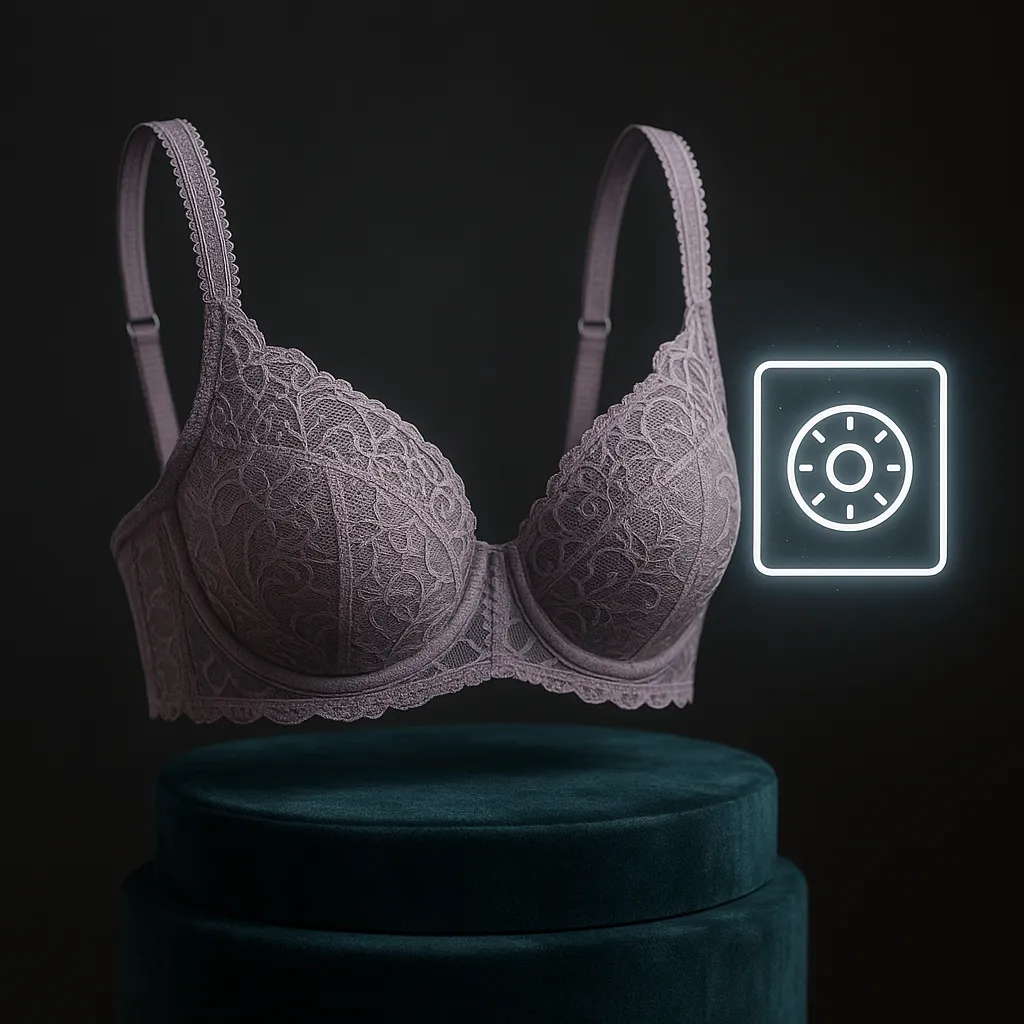
What’s the Rarest Bra You’ve Seen?
Rarity has been a subtle thread running through this entire September series. We’ve talked about the psychology of collecting, how to begin your own collection, and even cleared up some of the biggest misconceptions about collectors. Now, it’s time to bring that thread to the surface with a simple but powerful question:
What’s the rarest bra you’ve ever seen—or owned?
https://t.co/KwOpnE81mF—or owned? Share your story below!
— Bratags.com (@bratagscom) September 13, 2025
Reply with photos or stories—we love seeing what makes a bra truly rare#Bratags #BraCollector #RareBras #LingerieLovers #BraCommunity #CollectingLingerie #BraStories #UniqueLingerie #BraHunt #VintageLingerie #breasts 🖤
What Makes a Bra “Rare”?
Rarity in the world of lingerie isn’t a one-size-fits-all definition. It can mean different things depending on what you value as a collector:
- Scarcity & Production
Limited editions, discontinued lines, or pieces that only appeared briefly before being pulled. - Size & Fit
Bras in uncommon bands or cups that were never mass-produced. - History & Story
Provenance matters—maybe it belonged to someone notable, or was part of a special drop. - Condition & Preservation
A delicate piece that somehow survived decades without damage. - Design & Material
Unusual fabrics, hand-finished details, or unique trims that stand apart.
Collector Perspectives on Rarity
In our earlier post, The Psychology of Collecting Intimate Items, we explored how collectors often seek emotional connection rather than pure financial worth. That mindset carries into rarity. For some, the rarest bra is one that completes a set; for others, it’s the piece they thought they’d never see again.
Similarly, Common Misconceptions About Collectors highlighted how rarity doesn’t always translate into obsession with price tags. The thrill is often in the hunt and the story.
A Few Rare Examples
To help spark inspiration, here are a few kinds of “rare” bras we’ve seen in the community:
- The Vintage Lace Demi
A 1950s demi-cup with hand-stitched lace, preserved in nearly flawless condition. - The Limited Edition Designer Release
A short-run piece from a luxury brand that was never restocked. - The Uncommon Size
An unusual band/cup combo—like a 28K—that’s virtually impossible to find today.




Panache Tango Superbra 28K Cup Nude Blaconnet Bra
When Rarity Lives in the Numbers: The Story of Small Bands and Large Cups
If you’ve ever glanced at a bra tag and seen a size like 28K, you might have blinked twice. For most people, the sizing system is confusing enough—letters keep going well beyond D, and band numbers seem arbitrary. But for collectors, and particularly for the founder of Bratags, those numbers tell a story of true rarity.
The Band-Cup Paradox
Here’s the paradox: breasts can be large without being “big all over.” That’s where the small-band, large-cup combination enters the scene. A 28K is not “extra enormous” in the way pop culture imagines. Instead, it describes a woman with a narrow ribcage but full projection in the bust. This makes the band snug and supportive while the cups expand dramatically outward.
What makes these bras rare is not the body type itself—plenty of women live with this exact build—but the production economics behind lingerie. Brands often scale production for “average” customers: 34B, 36C, 38D. Stray too far from those, and you’re suddenly in a desert of availability.
This desert is where rarity blooms.
A Founder’s Affinity
The founder of Bratags has long been fascinated by this paradox. Not in a purely academic way, but with an unabashed appreciation for full busts on petite frames. That affinity, in many ways, shaped the DNA of the platform. While others might have overlooked the collectors who chase unusual sizes, Bratags leaned in—knowing that the 34L, the 32P, or the elusive 28K were not just labels, but rare treasures to those who understood their significance.
Imagine spotting a bra like this at a flea market, tucked among stacks of 36Cs. To most shoppers, it’s just another bra. But to the trained eye, it’s a shimmering find, like spotting a rare coin minted only for a single year.
Economics of Rarity
Why don’t more brands make these sizes? Three reasons:
- Inventory Risk
Every size produced requires fabric, labor, and storage. Small bands with large cups represent a narrow slice of demand, making them “risky” for mass production. - Fit Complexity
Designing bras for larger cups requires sturdier engineering: reinforced underwires, wider straps, stronger stitching. Combine that with a petite band, and the technical challenge rises. - Retail Visibility
Walk into a department store. You’ll see rows of 34Bs and 36Cs. Rarely will you find a 28K on the rack, because floor space goes to what sells fastest.
For collectors, these constraints only increase desirability. The rarer the piece, the greater the satisfaction of acquiring it.
Stories Behind the Tag
Consider Emily, a collector from Boston, who recalls stumbling upon a 28K balconette bra in mint condition. She wasn’t even searching for it—it appeared like fate. To Emily, the find wasn’t just about the bra’s rarity, but about representation. “It felt like someone, somewhere, had thought of women like me,” she said. “I bought it instantly, even though I didn’t technically need another black balconette.”
Another collector, Daniel, recalls his hunt for a 30GG in a discontinued luxury line. He spent two years scouring resale sites, finally landing one through Bratags. “It felt like winning the lottery,” he said. “Not just because I wanted it, but because I beat the odds.”
Beyond Collecting: Daily Life Challenges
For women who actually wear these sizes, rarity can feel less romantic. It can be exhausting. Imagine walking into ten lingerie stores, only to leave empty-handed. Online shopping becomes the only option, often with higher prices and fewer styles.
The collector’s thrill of chasing rarity mirrors a daily struggle for fit. That duality—beauty in scarcity, frustration in necessity—is part of what makes small-band/large-cup bras so symbolically powerful in the Bratags community.
The Collector’s Lens
In collecting terms, these bras become holy grails. They embody multiple layers of rarity at once:
- Size Rarity: Very few exist in circulation.
- Production Rarity: Discontinued models vanish permanently.
- Wearability Rarity: For those who need them, they’re functional treasures.
- Story Rarity: Each find comes with a tale of persistence, luck, or both.
When combined, these layers transform what looks like “just another bra” into a coveted artifact.
Founder’s Note: Why It Matters
The Bratags founder often recounts that his fascination wasn’t just with the aesthetic of large breasts on small frames, but with what that combination represented: uniqueness in a world of mass production.
That appreciation set the tone for Bratags as a platform. It wasn’t about catering only to the mainstream—it was about making space for those who live outside it, whether they’re searching for a size that rarely exists or celebrating a design the world forgot.
A Cultural Blind Spot
It’s worth noting how rarely this body type is reflected in mainstream fashion or advertising. Runway models are tall and lean, often wearing sample sizes that flatten bust variety. Commercial lingerie ads, on the other hand, usually focus on middle-of-the-road sizing to maximize relatability.
That leaves the small-band/large-cup figure as something of a cultural blind spot. Collectors help fill that gap by valuing what society often overlooks. They keep the narrative alive that these bodies exist, deserve representation, and can be celebrated.
The Emotional Pull
Why does the rarity of these sizes matter so much? Because it blends desire with empathy. To own a 28K bra is to acknowledge the woman who wore it—or the one who longed for it but never found it. It’s a physical reminder of scarcity, beauty, and resilience.
For the Bratags founder, the emotional pull was also personal. Collecting and curating these bras wasn’t just about logistics—it was about honoring a form of beauty that mainstream systems deemed too rare to bother with.
The Future of Rare Sizes
As awareness grows, some brands are finally widening their size ranges. Online-first companies, freed from the limitations of shelf space, are taking chances on expanded size charts. That’s good news for wearers, but it also raises an interesting question for collectors:
When rarity decreases, does value decrease?
Not necessarily. True collectors know that the first wave of 28K bras—produced in smaller runs, often with unique construction—will remain treasures long after mainstream brands catch up. Like first editions in book collecting, they hold a permanent place in the archive.
Closing Reflection
The 28K is more than a size—it’s a story. A story of production economics, of overlooked bodies, of collectors who hunt against the odds, and of one founder’s unapologetic admiration for a shape the world too often forgets to serve.
So when you next encounter a rare tag, pause. Consider what it represents. Behind every 28K is not just a bra, but a reminder: rarity isn’t just about scarcity. It’s about recognition, beauty, and the persistence of those who refuse to be left out.

The Poll: Share Your Rare Finds
We want to hear from you. What’s the rarest bra you’ve seen or owned? Share your stories and help us build a gallery of the extraordinary.
Poll categories to consider:
- Most unusual size
- Most unique design or materials
- Best provenance or story
- Rarest brand or model
Why Rarity Matters in Bratags
Bratags isn’t just about connecting buyers and sellers—it’s about preserving meaning. Rarity plays a big role in that mission:
- Trust & Authenticity: Our tools help document provenance, metadata, and authenticity markers.
- Preservation: Sharing rare pieces helps safeguard lingerie history.
- Connection: Rare stories connect collectors across borders and generations.
How to Spot Rarity When You’re Starting Out
If you’re new to collecting, spotting rarity can feel overwhelming. Our earlier guide, How to Start Your Own Bratags Collection, offers a roadmap. A few quick tips:
- Research which brands and models had limited production runs.
- Pay attention to unusual sizes and discontinued ranges.
- Always check tags, materials, and finishing details—they often reveal surprises.
- Document what you find: photos, stories, and context make rarity more meaningful.
Conclusion
Rarity isn’t just about scarcity—it’s about significance. The rarest bra you’ve seen might not mean much to anyone else, but it carries a story that only you can tell. And when shared, those stories enrich the whole community.
Create your Bratags account and come along for the ride—30 stories, one for each day.
- List your bras Signup Now
- Join our mailing list
- Pitch us your data questions or ideas [email protected]



















































